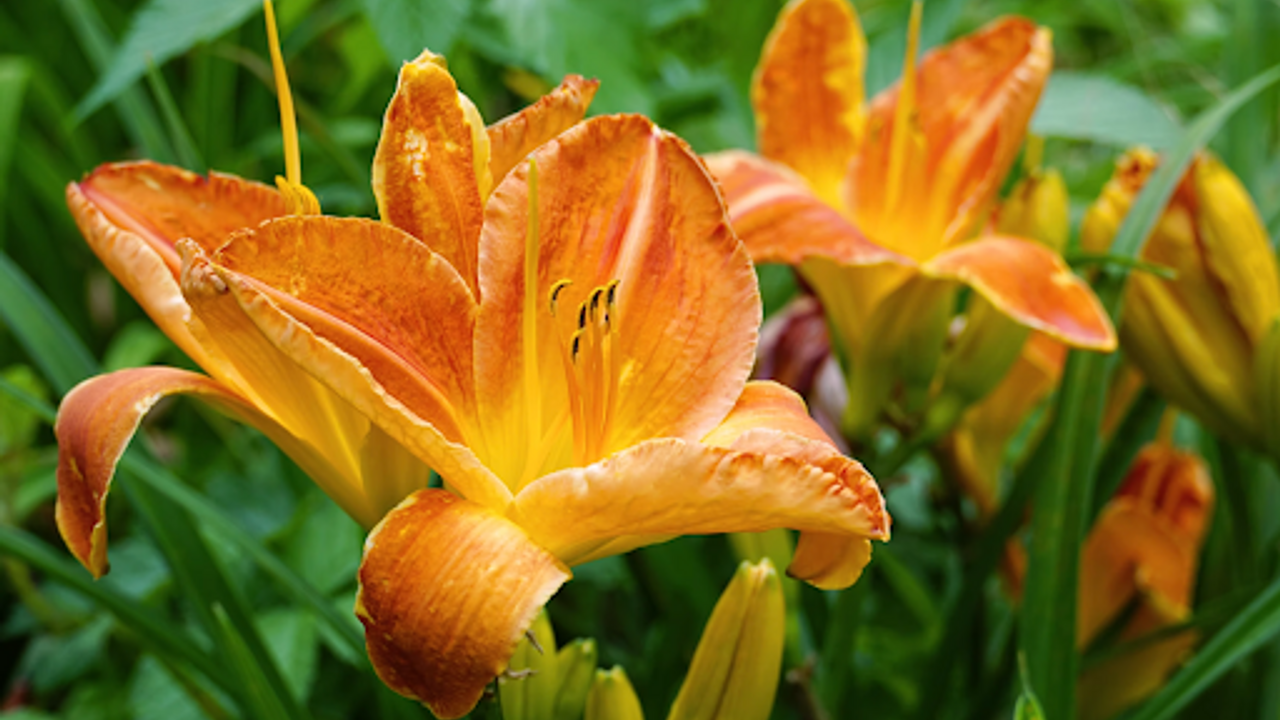
Story by Emily Leidenfrost, Coaching and Maintenance Team, Custom Foodscaping
As a foodscape designer, one of the challenges of planting fruit trees and layered orchards is finding reliable understory plants that can adapt to the growing canopy and expanding shade. Here’s a list of 12 sun/shade adaptable plants that are either edible, provide groundcover, attract pollinators or all of the above. Your clients will be pleased you thought of it!
#1 DAYLILY
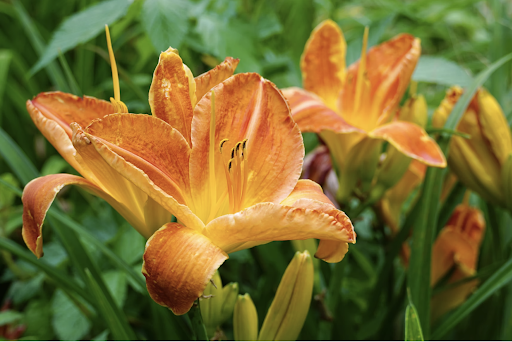
A foodscaping favorite, both daylily shoots and blooms are edible. Flowers are more reliable in full sun, but they still work as a great groundcover in full shade. Use clumping daylily varieties for less aggressive spread.
#2 CONEFLOWER
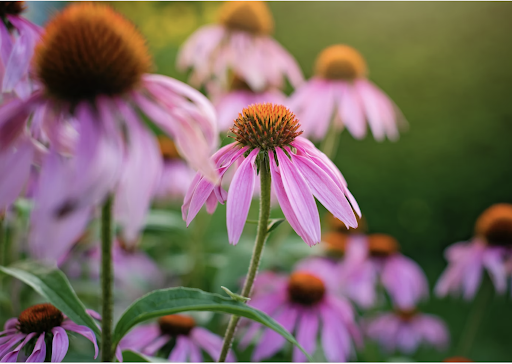
The beloved coneflower is actually considered a woodland edge species, and therefore performs well in some shade. These come in a lot of colors and varieties–we love the PowWow series for their compact stature. For the most ecological benefit, opt for the straight species (echinacea purperea) or Pale Purple Coneflower (echiacea pallida) for earlier blooms with drooping petals.
#3 COLUMBINE
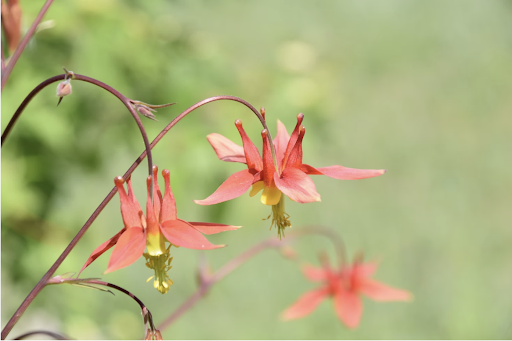
Did you know that the young tender leaves of columbine are edible? They have a fresh, citrusy taste that makes a great addition to salads. This shade favorite can also duke it out in full sun. Prefers well-draining soil. Spreads readily from seed.
#4 CURRANT
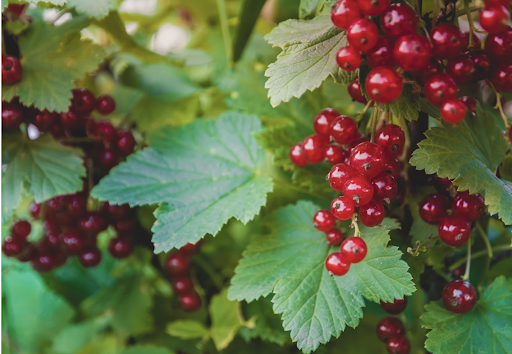
Throwing in a shrub here for added layering effect! Everything in the currant family–red/black currant, clove currant, gooseberry and jostaberry–will tolerate some shade. If paired near a growing tree, aim to give this shrub at least 4 hours of light for some fruit production, so be mindful of where you place it while anticipating future tree growth.
#5 CHIVES
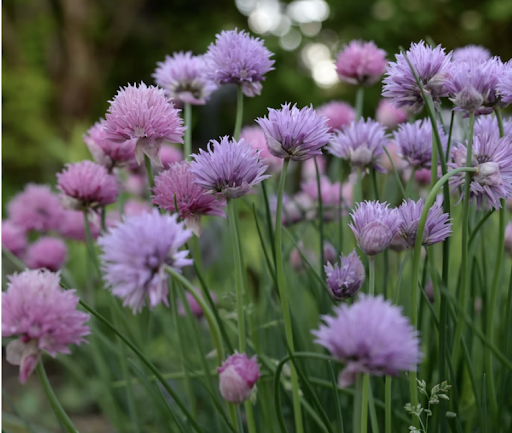
Herbs - or plants that are grown primarily for leaves and not blooms –are pretty adaptable to the shade. Both garlic and regular chives will thrive in the full sun and grow a little more sparse and leggy in the shade.
#6 SEDUM
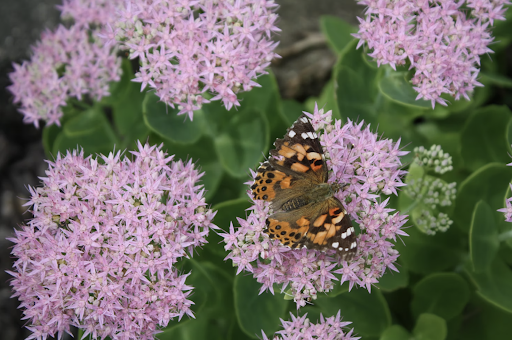
Not only does sedum or stonecrop add fall interest to a garden, but it has edible young leaves in the spring. I’m continuously surprised by how well this plant performs in the shade. Choose varieties like ‘Autumn Joy’ and ‘Autumn Fire’ to add to your understory.
#7 YUCCA

This 80’s landscaping favorite is making a comeback! There’s really nothing else (in the midwest, at least) that can compete with it’s fierce and upright structure. Plus, it’s an evergreen! Most parts of this resilient plant are edible, and it can thrive in full sun or full shade
#8 BEE BALM
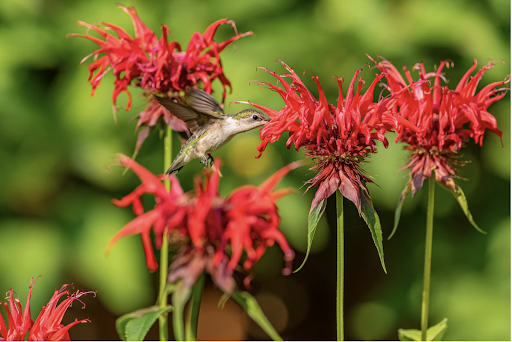
Like coneflower, bee balm is also oftentimes found in the woods–it doesn’t mind the shade. We love Monarda bradburiana because it’s a straight species with compact structure. You can find bee balm in all kinds of colors, but the fiery red ‘Jacob Cline’ is hard to beat!
#9 ZIG ZIG GOLDENROD
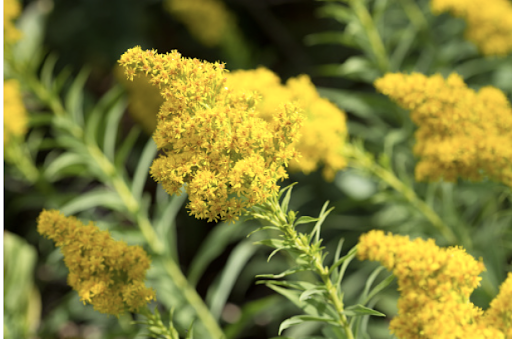
This native goldenrod is a woodland species, but can tolerate full sun. Can be an aggressive spreader, so make sure to accompany it with other plants that can hold their own. Great as a fall nectar source for native pollinators.
#10 MINT
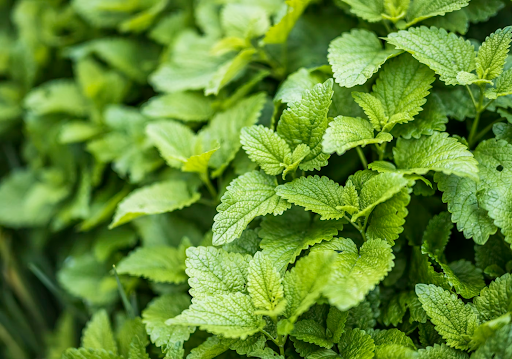
If you’re a professional in this industry, you don’t need me to warn you about mint! It can be a great understory to a fruit tree, given the right conditions. Mint can be planted around trees surrounded by turf, because it competes well with the grass and any rhizomes that spread are quickly mowed down. Grows less vigorously in the shade, but you’ll still have plenty for tea and more!
#11 VIOLETS

You either love ‘em or you hate ‘em, right? Wherever you land this argument, there’s no denying that violets are the most resilient groundcover! This edible native plant does well in full sun or full shade. Eat the flowers and embrace the spread.

